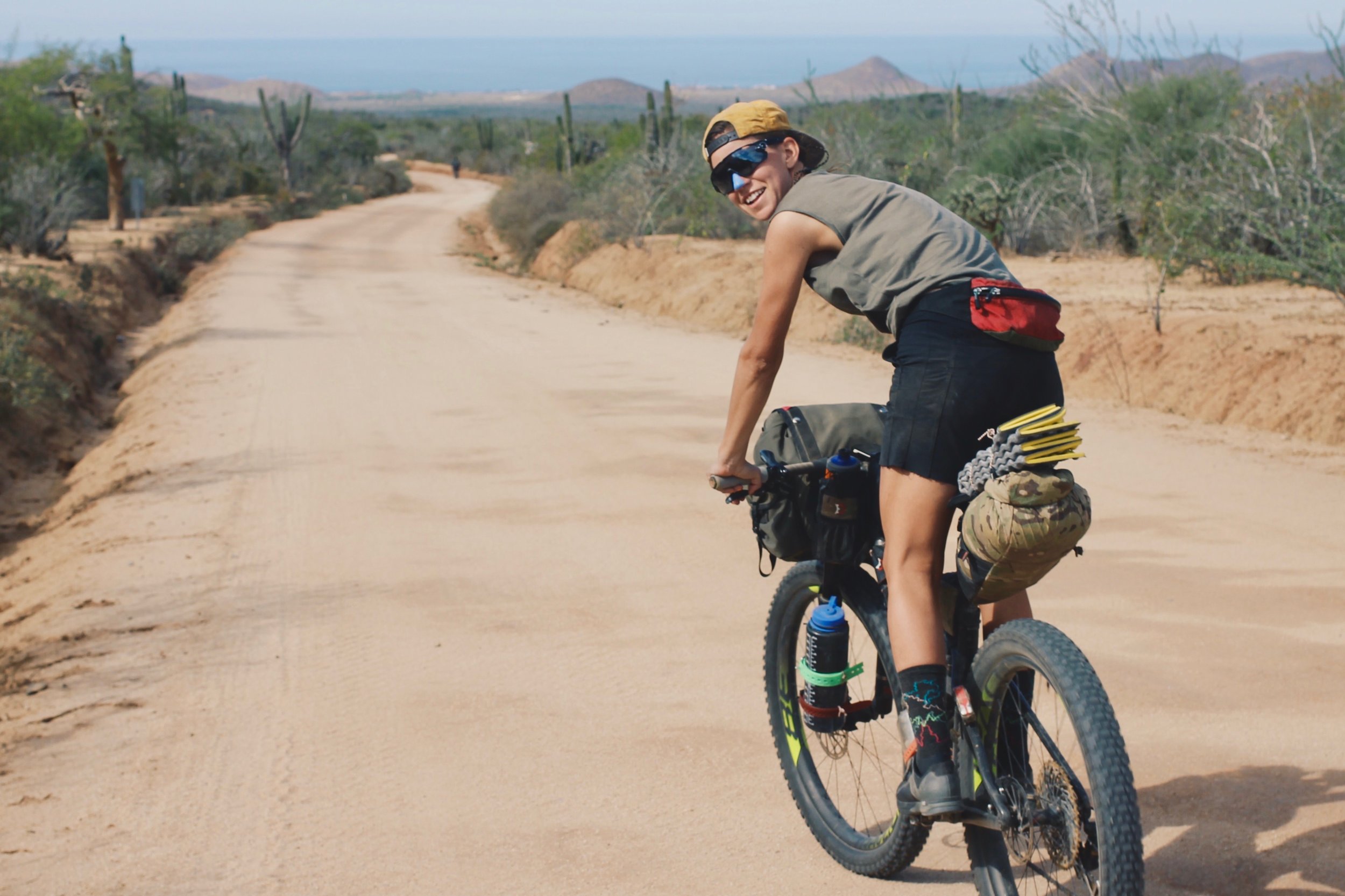Originally published on Adventure Pro in September, 2018
In 2015 I needed to make a change in my life, so I closed my bicycle shop in Loveland, Ohio, moved out of my house and embarked on a 5,000 mile bike ride across the U.S.A, all on dirt roads.
The route I followed is called the Trans-America Trail, or TAT, and is traditionally traveled by dual-sport motorcycles. I realized on my TAT adventure that I would rather live to be free than work to live. I wanted to continue to travel and share my experiences from the road through photos, stories, and bike routes, so I kept riding and living nomadically. To say the least, for me it’s pretty awesome.
For the past three years I have ridden my bicycle and camped over tens of thousands of miles of dirt roads throughout the U.S., Canada, Mexico, Spain, and Morocco. To date, I spend seven to eight months out of the year living on my bike. For the rest of the time I base myself in Durango, Colorado.
How do I make it all work? People ask me all the time. I support myself through sponsorship, writing stories for blogs, magazines, and books. I organize events and make bikepacking routes. You can even find me working part-time at a bike shop, the Durango Cyclery, for a few months out of the year.
While bikepacking changed my life drastically, you don’t need to give up your job, your home, or your pets to benefit from the thrill, challenge and freedom that bikepacking adventures can bring. Here are some of my recommendations for how to get started.
Sarah Swallow’s Tips for Beginner Bikepacking
Plan ahead. But not too much. Be sure to note the distance of your route, the elevation, food and water resupply points.
Don’t rush it. Take a lot of breaks, go for mid-ride hikes and swims, explore and take pictures! Ditch those gel packs, and bring real food for a picnic (i.e. hard salami, cheese, crackers and olives).
Get out there, no matter your gear.You don’t need fancy gear to start. Work up to it and use what you have. My friend carried a backpack full of her stuff and strapped a full size pillow to her bike on her first bikepacking trip and she had a blast. Also head over to www.bikepacking.com for general information about bikepacking, gear, routes, events, and stories.
Embrace the unexpected. We live such rigid goal oriented lives that it can be challenging to be flexible, adaptable, and to embrace the unexpected change that can happen during an adventure. Bikepacking can be a lot less stressful and a lot more fun if we can let loose a little.
Use a GPS device and make navigating easy. These days our smartphones make great GPS devices. There are loads of applications where you can download base maps and routes to follow. My favorites are Gaia GPS and Ride With GPS.
Start small. Plan more time than you think you need for your first few trips. A 50-mile route fully loaded with bikepacking gear will take much longer than it would unloaded. My favorite average mileage per day is 25-30 miles depending on terrain (dirt road vs. singletrack), conditions, and elevation.
Visit public lands. I suggest starting in the closest national forest or BLM land to you for quiet roads and trails, and easy camping. Maps for public lands are easily accessible and outline different trails, roads, and campgrounds making it a bit easier to plan a route to follow.
Bring the necessities. Shelter, sleeping bag, sleeping pad, GPS device, battery, water filter, tool and repair kit, food, wool layers, down jacket, rain jacket, water bottles or water bladders.
There is no shame in music doping. I ride with a Boombotix Stereo and play my favorite tunes to get me through the tough times. Plus, when you are out in the middle of nowhere you can dance and sing as loud as you would like.
Ride dirt roads. While singletrack can add a certain level of peace, quiet, and adventure, it can also take a physical and mental toll when you ride them on a fully loaded bike. Dirt roads are great options for bikepacking. They will get you out there but are less technical than bikepacking on singletrack.
Four Beginner Friendly Bikepacking Routes in the Four Corners
Cedar Mesa Loop, Utah: 154 Miles, 9,607 ft of elevation gain, 60% unpaved, 0% Singletrack, 3-4 days.
Alpine Loop, Colorado: 80 Miles, 7,800 ft of elevation gain, 85% unpaved, 0% singletrack, 2-3 days.
Valles Caldera Supervolcano Explorer, New Mexico: 121 Miles, 12,624 ft of elevation gain, 90% unpaved, 3% singletrack, 3-4 days.
Craters and Cinder Cones Loop, Arizona: 185 Miles, 12,000 ft of elevation gain, 90% unpaved, 2% singletrack, 3-4 days.









